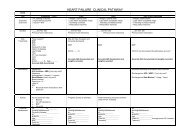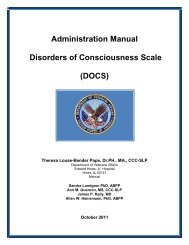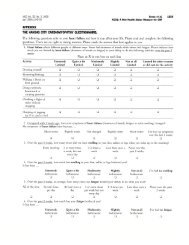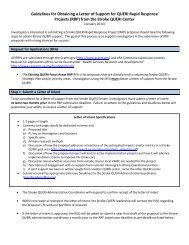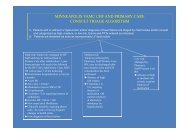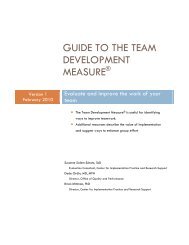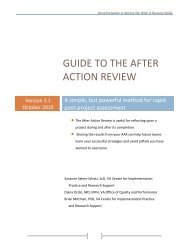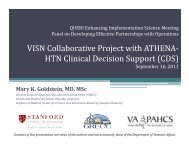The Veteran Supported Education Service Treatment Manual: VetSEd
The Veteran Supported Education Service Treatment Manual: VetSEd
The Veteran Supported Education Service Treatment Manual: VetSEd
You also want an ePaper? Increase the reach of your titles
YUMPU automatically turns print PDFs into web optimized ePapers that Google loves.
enefits had higher income levels than non-<strong>Veteran</strong>s of similar age, were more likely to<br />
be in professional and skilled occupations, and were better educated‖ (President‘s<br />
Commission, 1956, p. 62).<br />
<strong>The</strong> continued commitment of the nation and VA to supporting <strong>Veteran</strong>s education goals<br />
is evident in the implementation of the Post 9/11 GI Bill. This act has greatly increased<br />
the opportunities for OIF/OEF/OND <strong>Veteran</strong>s, including those with psychiatric<br />
disabilities, to get educational tuition benefits and stipends for housing and books (Miller,<br />
2011). <strong>The</strong> Post-9/11 <strong>Veteran</strong>s <strong>Education</strong>al Assistance Improvements Act of 2010 and<br />
the Restoring GI Bill Fairness Act of 2011, greatly expand tuition coverage as well as<br />
housing and books stipends for those attending institutions of higher education, as well as<br />
<strong>Veteran</strong>s attending technical education institutions.<br />
<strong>The</strong> uptake of these new educational benefits among <strong>Veteran</strong>s has been strong (Sabo,<br />
2010) with over 40,000 beneficiaries in 2011. Findings from a national college survey<br />
conducted by the American Council on <strong>Education</strong> (2009) in advance of the new GI Bill<br />
activation suggested that colleges were anticipating the largest influx of student <strong>Veteran</strong>s<br />
since the end of World War II; over half of the colleges responding to the survey already<br />
provided specialized services or had policies addressing the needs of military and<br />
<strong>Veteran</strong>s in their student populations, close to half had a dedicated office for serving<br />
student <strong>Veteran</strong>s, and approximately one third had student <strong>Veteran</strong> interest organizations.<br />
News media have reported that an increasing number of college campuses are developing<br />
supports for student <strong>Veteran</strong>s since the passage and activation of the Post 9/11 GI Bill<br />
(Khadaroo, 2009), as they experience rapid increases in <strong>Veteran</strong> enrollment, ranging from<br />
9 to 37% in many colleges and more than doubling in others (Hall, 2009).<br />
Many sectors of American society are responding to the rising of <strong>Veteran</strong> use of the GI<br />
Bill and also their need for assistance with education. Among these are: colleges that<br />
attempt to provide a more supportive and ―<strong>Veteran</strong> friendly‖ environment, <strong>Veteran</strong>s<br />
student organizations and other advocacy groups that provide support to <strong>Veteran</strong>s going<br />
to school, and courses that are designed to facilitate the <strong>Veteran</strong> re-entry to civilian and<br />
academic life. <strong>The</strong> <strong>Veteran</strong>s Health Administration and the new initiatives <strong>Veteran</strong>s<br />
Benefits Administration also are experimenting with different approaches and to support<br />
the schooling or training of <strong>Veteran</strong>s with disabilities. VA rehabilitation counselors are<br />
daunted by a myriad of challenges and other clinicians ―on the ground‖ also devise<br />
responses as service members who present themselves with a desire to further their<br />
education.<br />
149 | P a g e



